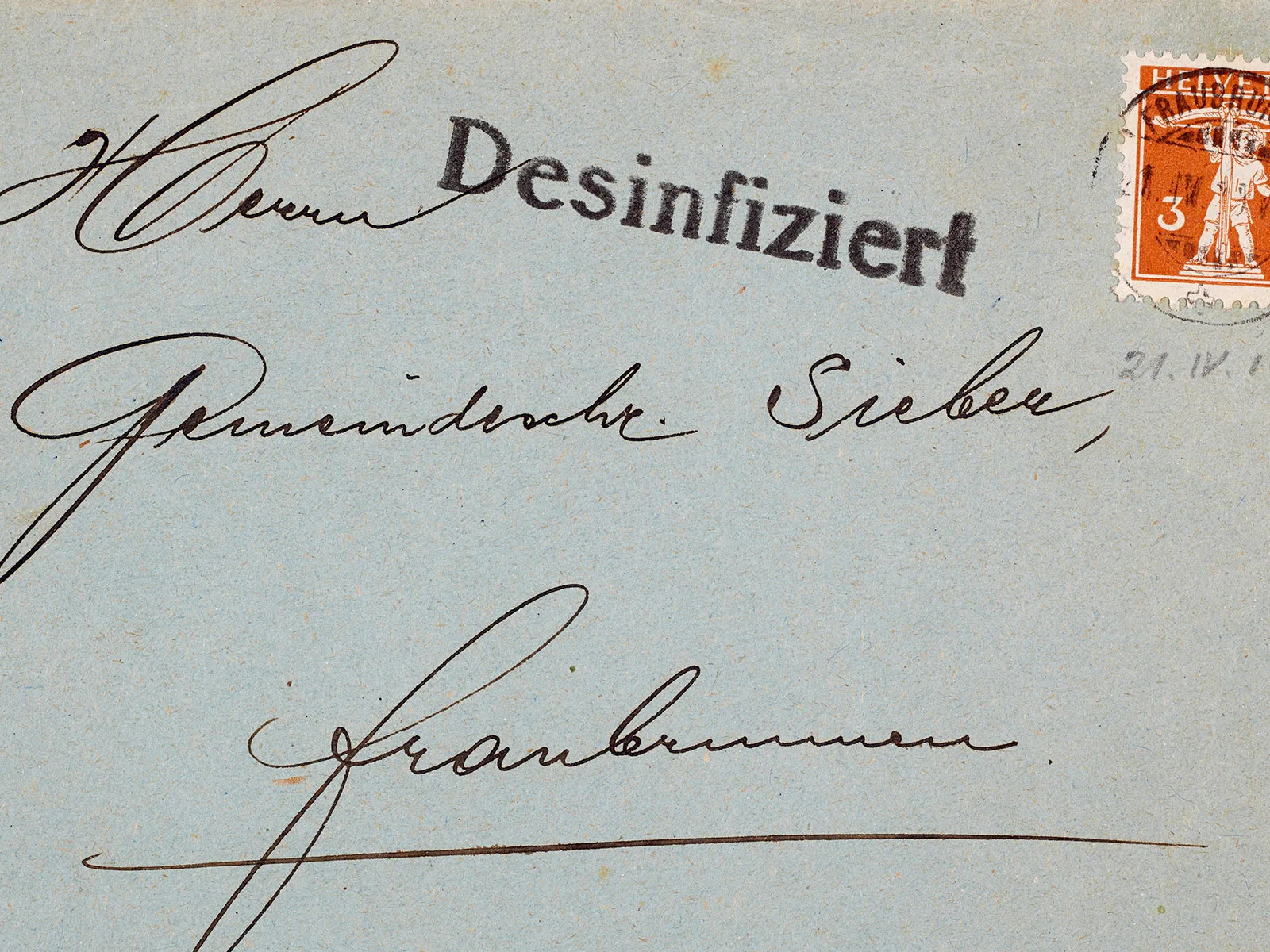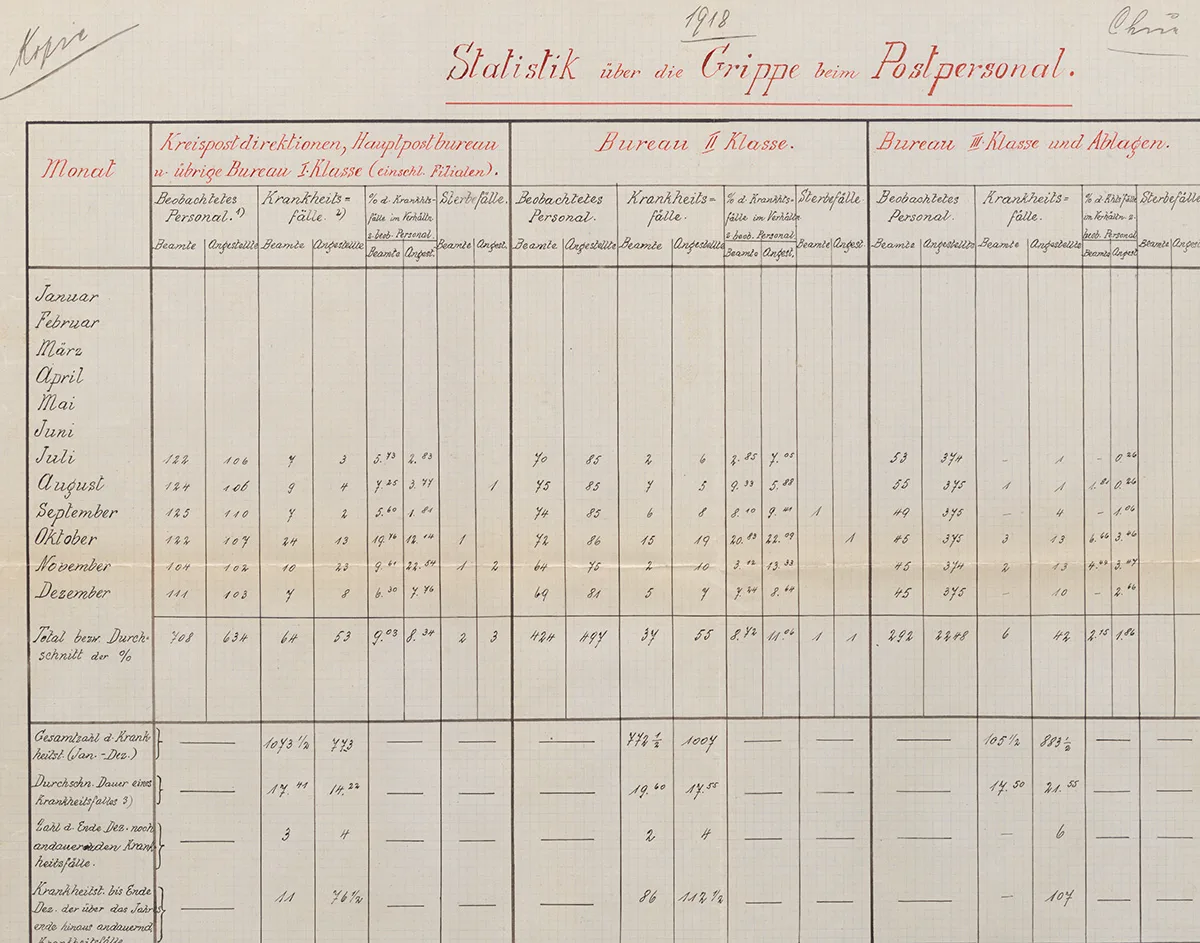
Disinfected letters
From cholera to coronavirus – epidemics have always had an impact on the postal service in Switzerland. A look back at the PTT archives shows how crisis situations were dealt with in the past.
Powerless against the flu


Epidemics and creatures great and small





